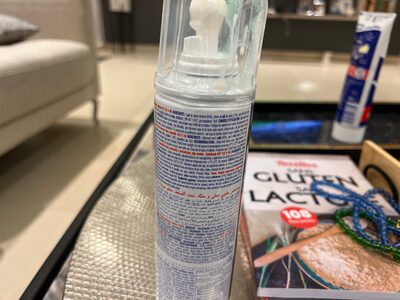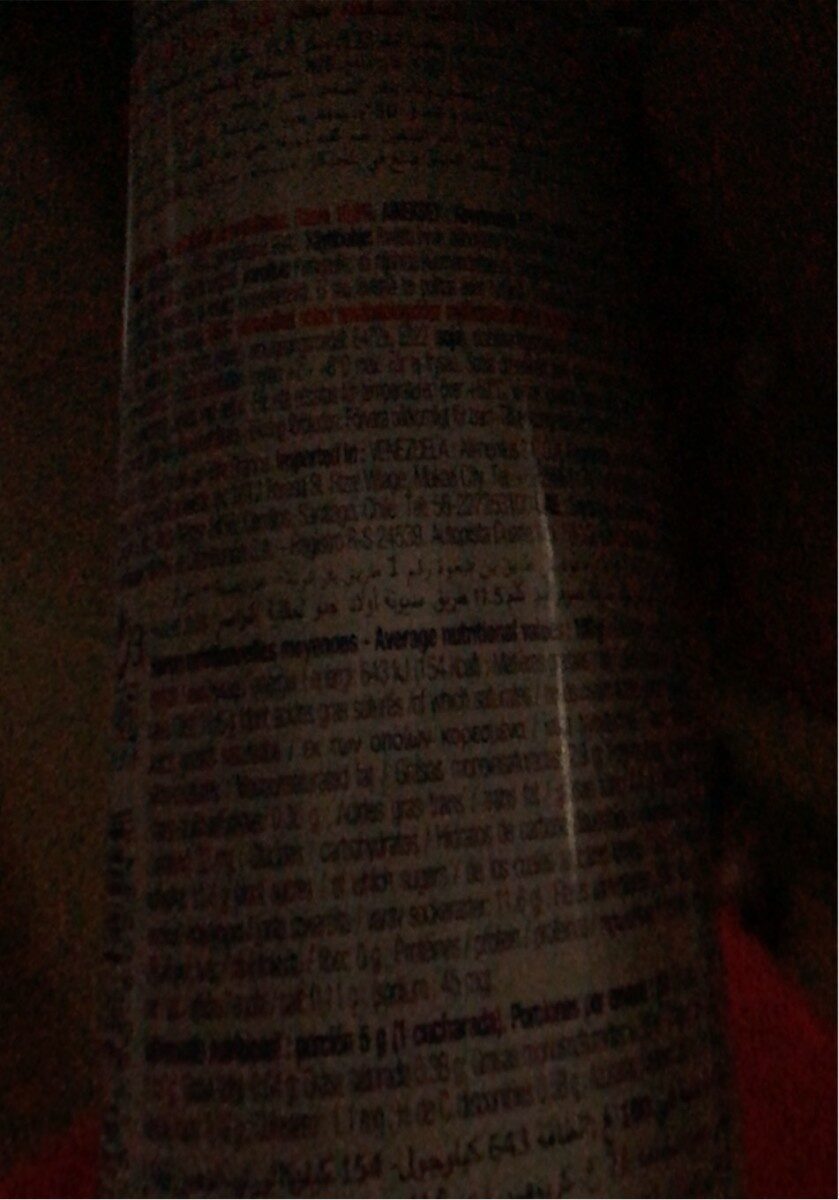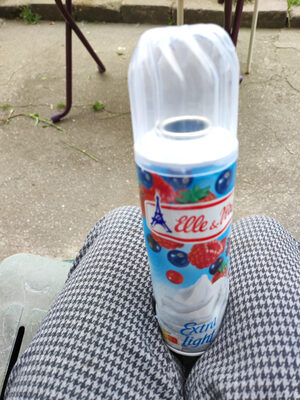La Crème Sous Pression Extra Légère 10,8% MG - Elle & Vire - 23,2 cl
Some of the data for this product has been provided directly by the manufacturer Elle&Vire.
Barra-kodea: 3451790802515 (EAN / EAN-13)
Izen arrunta: Crème fouettée légère UHT
Kopurua: 23,2 cl
Ontziratzea: fr:Bombe aluminium et bouchon plastique, fr:Bombe sous pression, fr:Brique en matériau composite et bouchon en Polyéthylène
Markak: Elle & Vire, Elle&Vire International
Brand owner: Savencia
Kategoriak: Esneki, en:Creams, fr:Crèmes légères, en:Crèmes, en:Crèmes cuisson, en:Crèmes entières, en:Produits laitiers, en:Surgelés
Etiketak, ziurtagiriak, sariak: en:No artificial flavors
Origin of ingredients: Frantzia, Europar Batasuna
Manufacturing or processing places: Normandie, France, Belgique
Traceability code: FR 50.139.001 CE - Condé-sur-Vire (Manche, France), C0 368 EC
Link to the product page on the official site of the producer: https://www.elle-et-vire.com/int/fr/crem...
Dendak: Toutes enseignes GMS
Saltzen diren herrialdeak: Belgika, Bulgaria, Boli Kosta, Frantzia, Alemania, Indonesia, Irak, Irlandako Errepublika, Libano, Luxenburgo, Espainia, Arabiar Emirerri Batuak, Erresuma Batua, fr:Angle, fr:Angleterre, fr:International
Matching with your preferences
Other information
Customer service: ELVIR 50890 Condé-sur-Vire - France www.elle-et-vire.com/en
Report a problem
Datuen iturria
Product added on by kiliweb
Last edit of product page on by org-elle-vire.
Produktuaren orria -gatik editatua aleene, gluten-scan, inf, off.7e948585-9330-46fd-945c-657c5db0fd01, openfoodfacts-contributors, packbot, quechoisir, roboto-app, roto, teolemon, yuka.DbYdGIORJc8cH_P37YQr3yOnT_y8LvVSJ0Ynog, yuka.E4lGHOCqFPMwR8XA0YUNxmC4BcXKXNRYNl8dog, yuka.FYJ8G-OATpcdEcePw9wR1TLlF8XuOcQBJ1Qqog, yuka.LaFAMtymIsV4R8iOwYEuxR3jONm5Mc9XIVwMog, yuka.VowYIf2IOc4eAcjZ_ps92hqWH-XaHNZhGG8tog, yuka.WnJ3S000NG85djVWdXZjczl3ekVvOVlzemIrR0JFUzFFclV4SUE9PQ, yuka.sY2b0xO6T85zoF3NwEKvll5bA9_8ow_qBRXiiEer3tKONMzXbP9x5LjRPag, yuka.sY2b0xO6T85zoF3NwEKvlmAbDfHiu2jYDED4mxKPzM6FJ4GzRdpuv5rnMKs.













